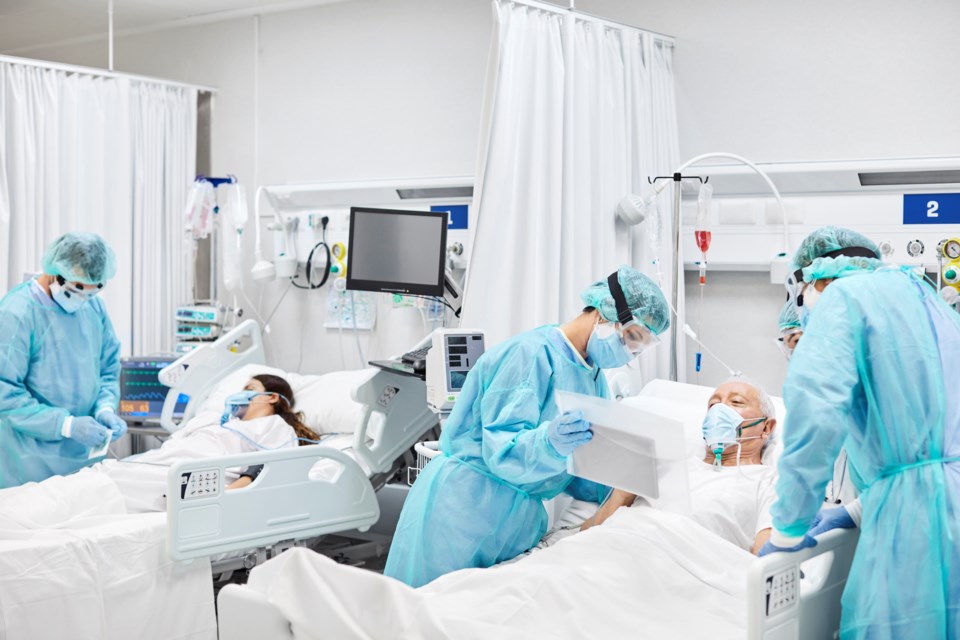That will involve service slowdowns and redeployment of up to 600 full-time hospital staff across the province to support pandemic response -- a ‘dimmer switch’ approach that will turn services down and up as needed, but nowhere near the level of slowdown seen with medical services in the spring.
The move comes as the number of cases in the province jumped by 530 per cent through the month of November, with 31 percent of ICU capacity in Saskatchewan hospitals currently being used for COVID cases. That number is expected to jump to 85 per cent of current capacity by mid-December.
The surge decision comes out of the current case projections from the SHA.
The confirmed daily case forecast is expected to hit 562 per day by Dec. 17, compared to the average of 269 seen over the past seven days. Hospitalized cases are expected to reach 250, 64 of those in ICU. That’s compared to 128 in hospital and 24 in intensive care as of Dec. 3
The main plans of the surge include:
- Creating capacity for 64 COVID patients requiring ICU care by mid-December to try to keep pace with projected demand. This means creating capacity to meet demand that is equivalent to 28 per cent more ICU beds than currently exist right now in Saskatoon and Regina combined.
- Creating capacity for 250 COVID patients requiring inpatient hospitalization by mid-December to try to keep pace with projected growth in demand. This is approximately equivalent to the capacity of the Cypress Regional Hospital in Swift Current and the Prince Albert Victoria Hospital combined.
- Creating capacity for contact tracing of approximately 560 average cases per day to try to keep pace with projected growth in demand, including keeping pace with more than 6,000 hours of work per day created for contact tracers if cases reach this level by mid-December as projected.
“Surges of this scale and on this timeline necessitate service slow downs to enable redeployment of staff, otherwise more people will die from COVID-19 because we can’t get them the help they need and we can’t get out in front of the virus,” SHA CEO Scott Livingstone said. “We acknowledge that this will result in some Saskatchewan residents experiencing localized service slow downs in pockets across the province, that is why we are committed to making these efforts as time-limited and targeted as possible.”
Partial service slowdowns will be seen in primary health care, elective surgeries, endoscopies, women and children’s programming, diagnostsics, therapies, ambulatory care, food and nutrition, rehab services and home care services.
All other major services will remain unaffected, offering what the SHA terms “a targeted approach to minimize patient impact and maximize staff for re-deployment... while avoiding a heavy shutdown like seen in the spring.”
These service changes will enable the SHA to redeploy up to 600 staff to strengthen testing, contact tracing and to identify the health care workers necessary to expand hospital and ICU capacity to help keep COVID and non-COVID patients alive and ensure the SHA can provide the care they need.
Be sure to visit the Government of Saskatchewan website for the latest information on the COVID-19 pandemic.




